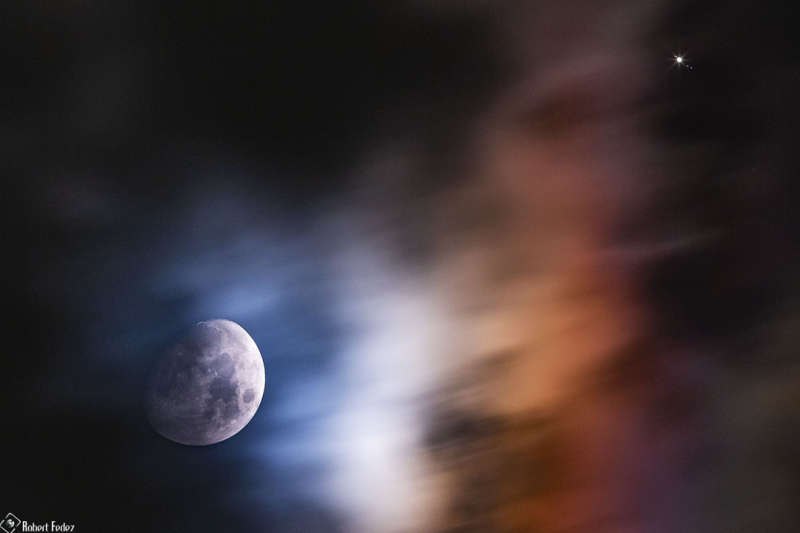
|
Credit & Copyright: Robert Fedez
Explanation:
How many moons do you see?
Many people would say one, referring to the
Earth's
Moon, prominent on the lower left.
But take a
closer look at the object on the upper
right.
That seeming-star is actually the planet
Jupiter,
and your closer look might reveal that it is not alone Á it is surrounded by some
of its largest moons.
From left to right these
Galilean Moons
are
Io,
Ganymende,
Europa and
Callisto.
These moons orbit the Jovian world just like the planets of
our Solar System orbit the
Sun, in a
line when seen from the side.
The featured single shot was captured from
Cancun,
Mexico last week as
Luna,
in its orbit around the Earth, glided past the distant planet.
Even better views of
Jupiter are currently being captured by
NASA's
Juno spacecraft,
now in a looping orbit around the Solar System's largest planet.
Earth's Moon will continue to pass nearly in front of
both Jupiter and Saturn once a month
(moon-th)
as the two giant planets approach their own
great conjunction in December.
Almost Hyperspace:
Random APOD Generator
|
January February March April May June July August September October November December |
| ||||||||||||||||||||||||||||||||||||||||||||||||
NASA Web Site Statements, Warnings, and Disclaimers
NASA Official: Jay Norris. Specific rights apply.
A service of: LHEA at NASA / GSFC
& Michigan Tech. U.
Based on Astronomy Picture
Of the Day
Publications with keywords: Jupiter - Jupiter's Moons - Moon
Publications with words: Jupiter - Jupiter's Moons - Moon
See also:
